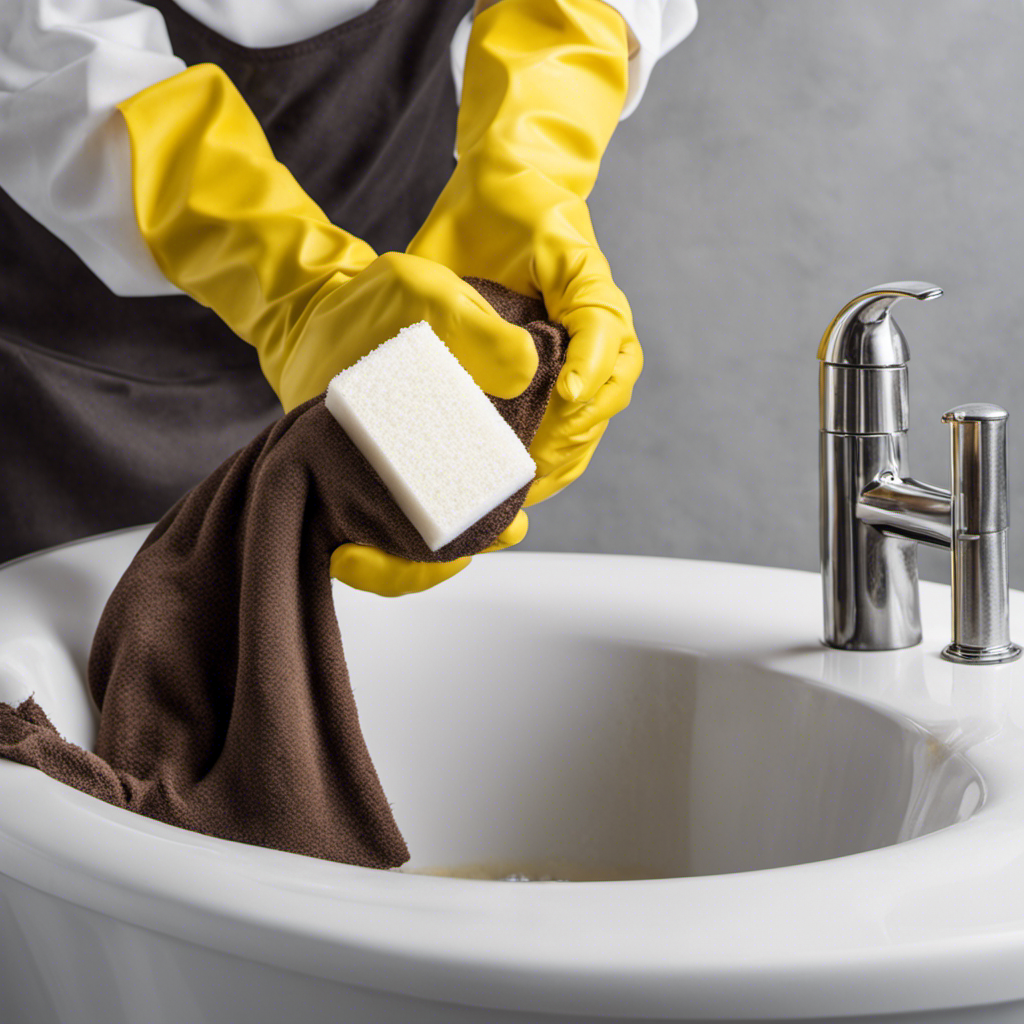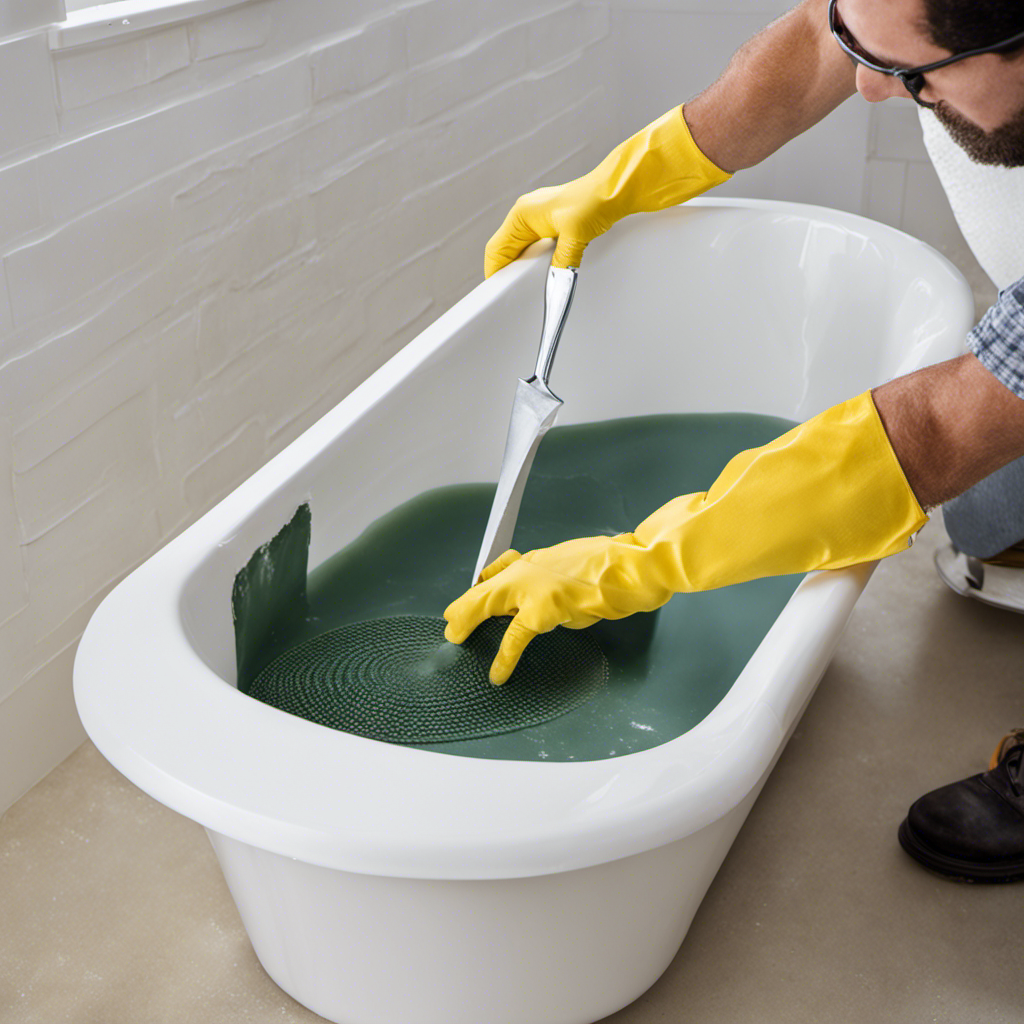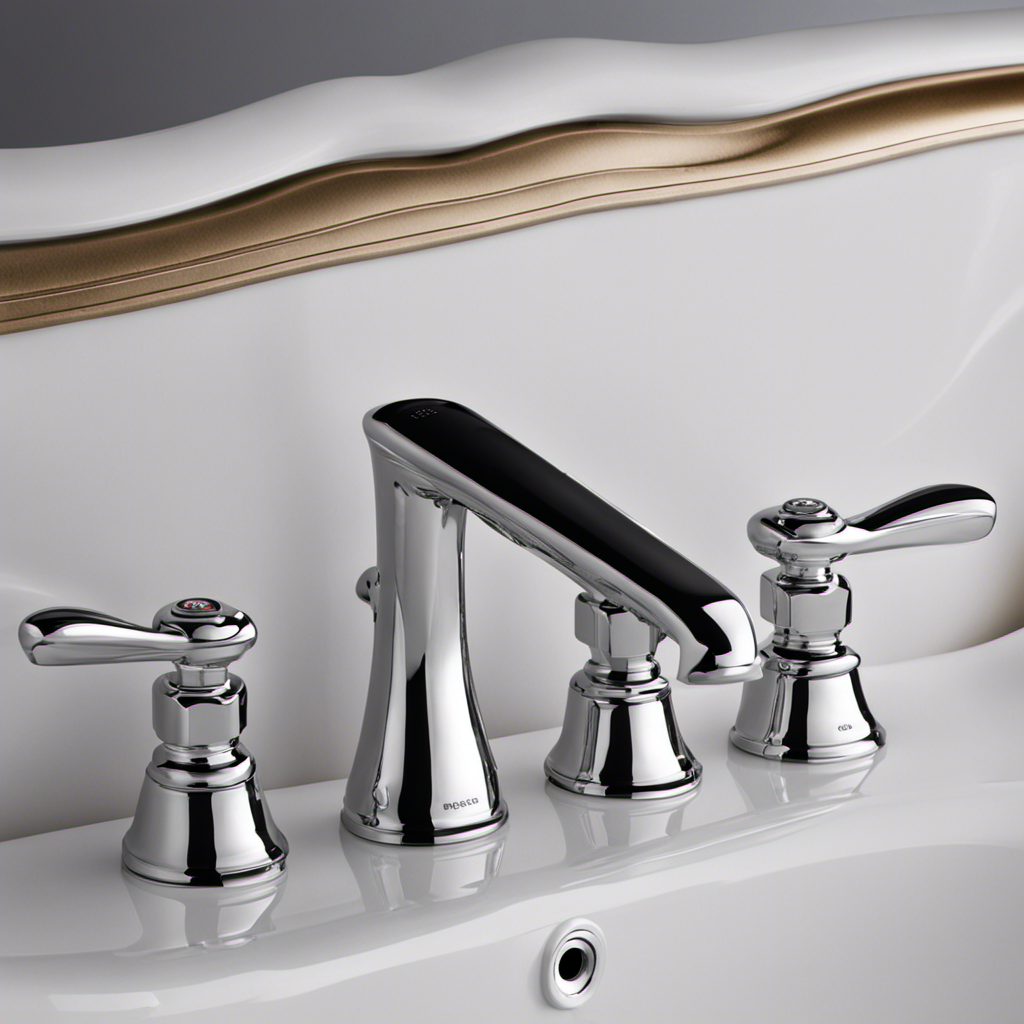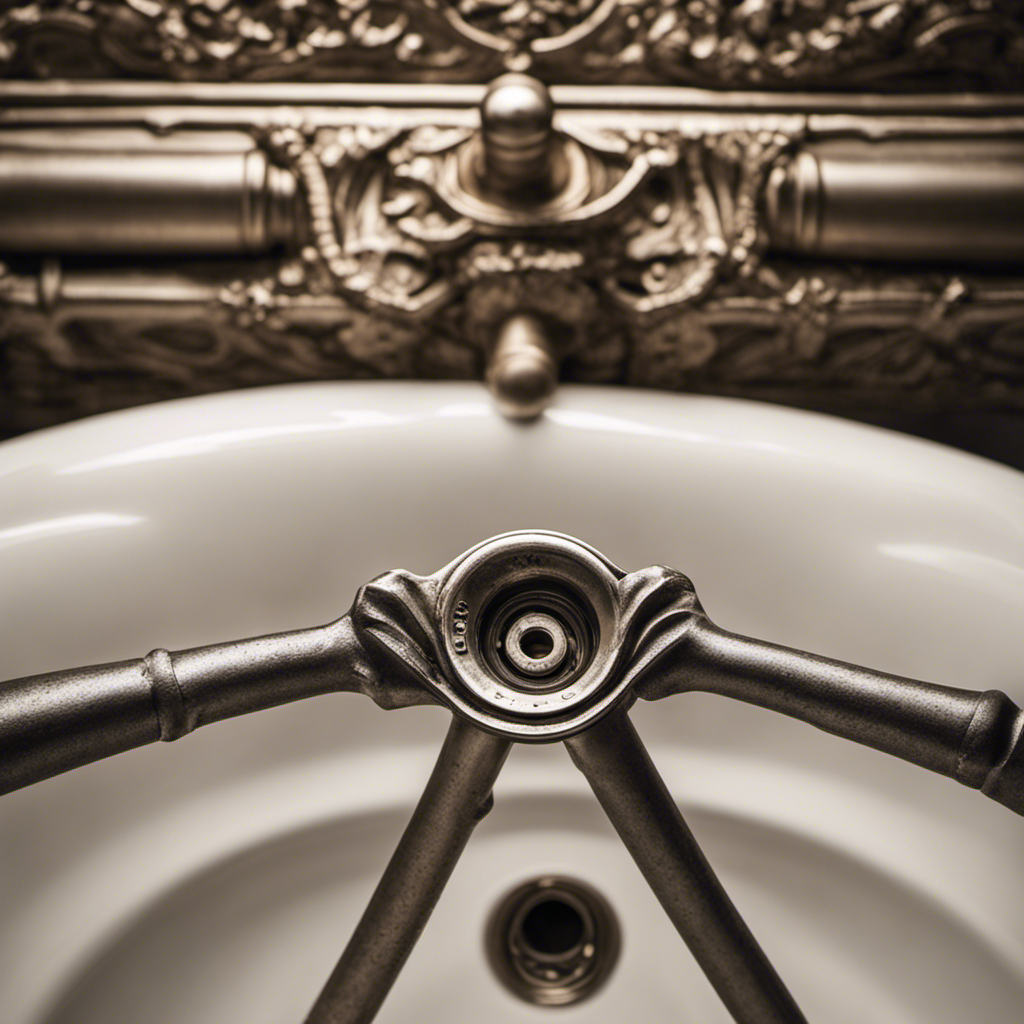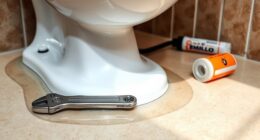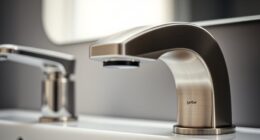Hey there!
Ever wondered how to put an end to that pesky bathtub faucet wasting water? Well, I’ve got you covered.
In this article, I’ll walk you through some simple DIY fixes and advanced techniques for water conservation. Trust me, with a little maintenance and preventive measures, you’ll be able to save both water and money.
So, let’s dive right in and get that faucet under control!
Key Takeaways
- Regularly check for leaks in the bathtub faucet and other plumbing fixtures
- Replace worn-out washers or O-rings to fix leaks and drips
- Tighten handles or replace faulty parts to stop continuous running water
- Install low-flow showerheads and aerators to reduce water usage in the bathtub
Assessing the Issue
First, you need to check if the bathtub faucet is dripping or leaking. Troubleshooting tips can help you assess the issue before considering professional plumbing services.
Start by turning off the water supply and examining the faucet closely. Look for any visible leaks or drips. Check the handles, spout, and connections for any signs of water leakage. If there are no visible leaks, listen for any dripping sounds and feel for moisture around the faucet.
Additionally, check the water meter to see if it is still running when all faucets are turned off. By following these troubleshooting tips, you can determine if the faucet is indeed wasting water.
Once you have assessed the issue, you can move on to identifying common causes.
Identifying Common Causes
To fix the issue, you’ll want to take a look at some common causes of water leakage from your bathtub faucet. Identifying these causes is crucial in addressing the problem effectively. Many people have misconceptions about the causes of water leakage, but understanding the true reasons can help save water and reduce the environmental impact.
Here is a table outlining the common causes of water leakage from bathtub faucets:
| Cause | Description | Impact |
|---|---|---|
| Worn-out washers | Resulting in constant dripping or slow leakage | Wastes water and increases utility bill |
| Loose or damaged O-rings | Allows water to seep through the faucet | Increases water wastage |
| Faulty valve or cartridge | Causes water to leak from the handle or spout | Significantly affects water usage |
| Improper installation or seal | Leads to water leakage from the base of the faucet | Can cause water damage |
Understanding these common causes will help you to identify the specific issue with your bathtub faucet and take appropriate action to fix it. Now, let’s move on to simple DIY fixes to address these problems.
Simple DIY Fixes
Now, let’s explore some easy fixes you can do yourself to address these problems.
When it comes to faucet repair, there are a few simple DIY fixes that can help you save water and prevent any wastage.
Firstly, check for any leaks or drips in the faucet. A leaky faucet can waste gallons of water every day. To fix this, replace the worn-out washer or O-ring.
Another common issue is a loose handle, which can cause water to continuously run. Tightening the handle or replacing any faulty parts can easily solve this problem.
Additionally, installing a faucet aerator can reduce water flow without compromising water pressure.
These simple fixes can make a significant difference in water conservation.
Now, let’s move on to advanced techniques for water conservation.
Advanced Techniques for Water Conservation
One way you can take your water conservation efforts to the next level is by installing a rainwater harvesting system. This advanced water-saving technology allows you to collect and store rainwater for various uses, such as watering your plants or flushing toilets.
By harnessing the power of nature, you can significantly reduce your reliance on municipal water sources and save a substantial amount of water.
Additionally, investing in water-efficient appliances is another effective method to conserve water. These appliances, such as low-flow showerheads and toilets, are designed to use less water without compromising performance.
Maintenance and Preventive Measures
Installing a rainwater harvesting system and using water-efficient appliances are effective measures to conserve water. However, it is also important to implement preventive measures and long-term solutions to ensure sustainable water conservation.
One such preventive measure is regularly checking for leaks in faucets, pipes, and toilets. Even a small leak can waste a significant amount of water over time.
Additionally, installing low-flow showerheads and aerators can reduce water usage without compromising on functionality.
Another long-term solution is to educate oneself and others about water conservation practices, such as turning off the faucet while brushing teeth or using a broom instead of a hose to clean outdoor areas.
Conclusion
In conclusion, it is crucial to take immediate action to address a dripping bathtub faucet in order to prevent water wastage. By assessing the issue, identifying common causes, and implementing simple DIY fixes, we can save significant amounts of water.
However, it is important to remember that water conservation is an ongoing process. Regular maintenance and preventive measures help ensure the efficiency of our plumbing systems, ultimately reducing our environmental impact.
So, let’s not delay in fixing those drips and doing our part to conserve water. As the saying goes, "A stitch in time saves nine."

